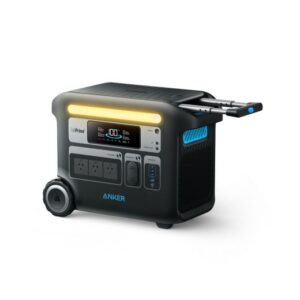The Anker 767 PowerHouse is a pricey investment in a versatile power station that’s easy to use and packs plenty of capacity.
Anker 767 PowerHouse power station review
The Anker 767 PowerHouse is a power station that’s built to operate as comfortably outside as it is inside. It can be used to power up to 10 devices simultaneously, with 0% to 80% charging in an hour with the option to recharge via mains power, car socket, or solar panels (at an extra cost).
Outside of some odd discharging issues, the main gripe with the Anker 767 PowerHouse is its size and weight: definitely get someone to help move this thing around. Otherwise, the Anker 767 PowerHouse offers reliable peace of mind for wire-free power during camping trips and electricity outages, compatible with every electrical device we tested it with.
Anker 767 PowerHouse price
There’s only one model for the Anker 767 PowerHouse, which comes in at an eye-watering $3,699.95 RRP. That’s before you consider paying for extras like solar panels or an additional stack-on-top battery to double the capacity from the base 2,048Wh.
For something cheaper, Anker has alternatives in its PowerHouse range. The Anker 757 costs $2,699.95 RRP for 1,229Wh and is a lot like a smaller-capacity Anker 767. Alternatively, there are smaller models with fewer features: Anker 535 for $1,299.95 RRP (512Wh) or the Anker 521 for $799.95 (256Wh).
‘Wh’ is an abbreviation for ‘watt-hour’. It’s the equivalent of one watt of power spent per hour, and it’s a measurement that’s typically used with electrical devices. Watt-hours are used to identify battery capacity and measure battery life. In practical terms, if a device uses 100 watts per hour and it’s connected to a power bank with 1,000Wh capacity, you should expect to get 10 hours out of the power bank when powering that 100Wh device.
Anker 767 PowerHouse: In the box
The main event of the Anker 767 PowerHouse is the portable power station itself. It also includes a mains AC charging cable, car port recharge cable, and solar charging cable. Additionally, there’s a user manual and an accessories bag that comfortably stores all of the cables.
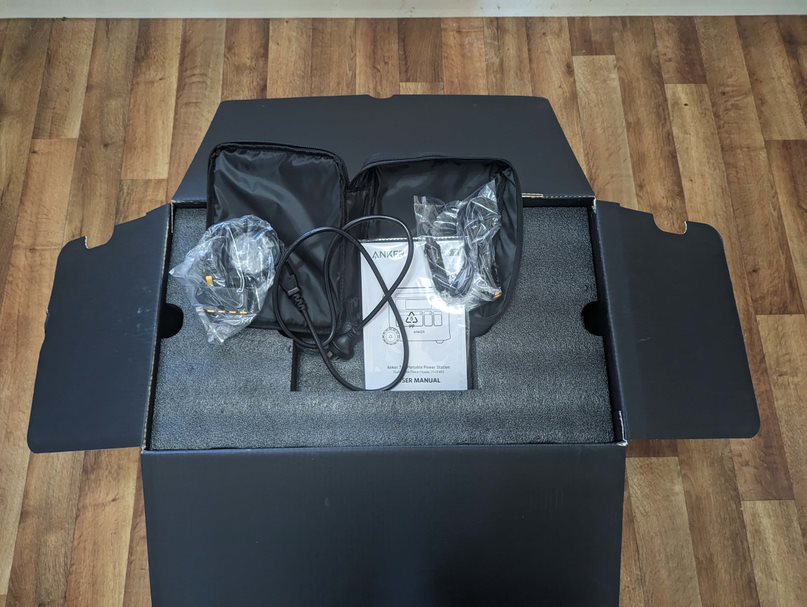
Anker 767 PowerHouse design and setup
The Anker 767 PowerHouse is a lot like an Esky at a top-down glance. There are two handles for carrying and, yes, you should absolutely use two people to lug this 30.5kg monstrosity around. It’s more portable on a level surface, though, thanks to a retractable handle and wheels that work as well on grass as they do on hard surfaces. There is no real setup required to use the Anker 767.
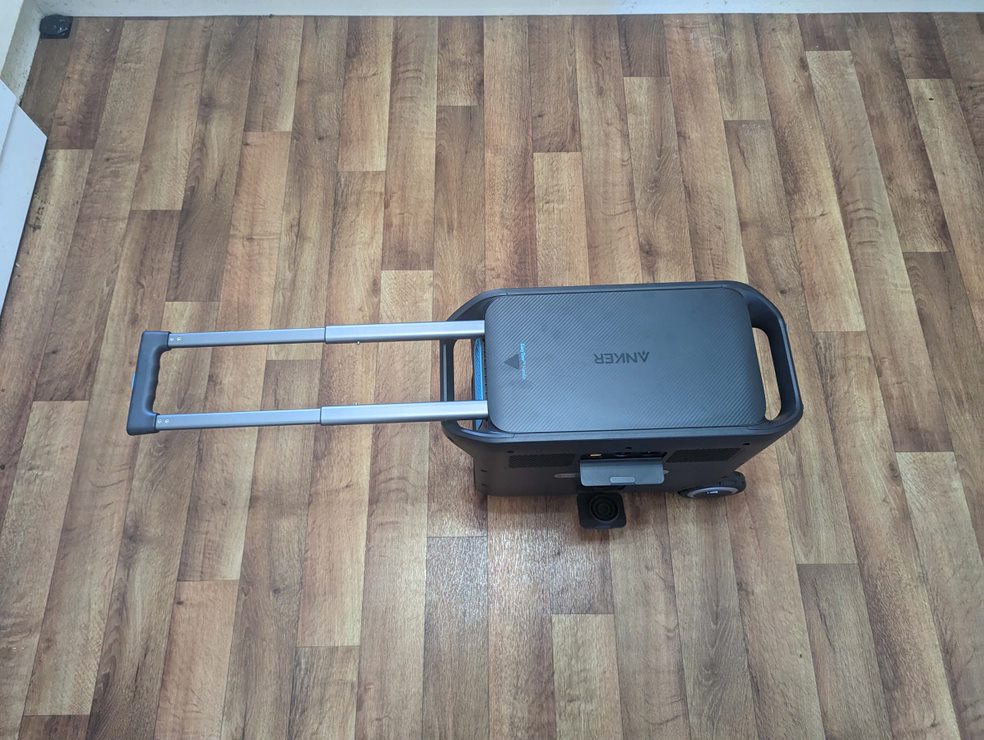
In terms of the all-important ports, the Anker 767 is separated into recharging on the back—solar, mains, and car—and charging outputs on the front. There are three main power outlets, two car socket ports, and five USB DC outputs (three USB-C and two USB-A). Power can be activated or switched off for the AC and car socket ports but the USB DC ports are constantly live.
Above the charging ports is a generously sized screen, which activates and dims after around 30 seconds whenever you tap the ‘Display’ button. Above the display is a light button that cycles a practically sized lightbar between different brightness modes. There’s also a Bluetooth sync button for the companion app, plus a power-saving button for a low-energy mode, which handily turns off the Anker 767 once connected devices are recharged.
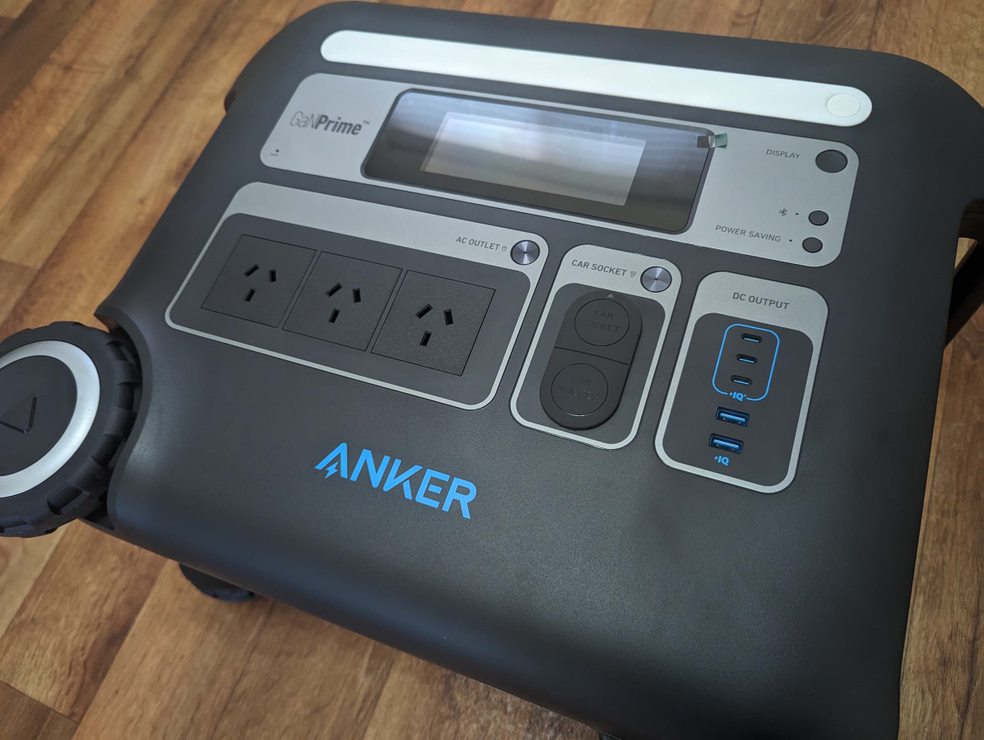
Anker 767 PowerHouse features and performance
The Anker 767 PowerHouse has an impressive list of features. For starters, the power station is rated for 3,000 charge cycles, which should equate to more than a decade of constant use. It’s expandable with extra-cost items, like solar input (up to 1000W) and double the capacity via Anker 760 Expansion Battery. Users can choose between continuous power for devices that need it or extend battery life by opting for an intuitive energy-saving mode.
Anker also claims the 767 can recharge from flat to 80% in an hour. Our tests took it from 27% to 100% in an hour. That longer real-world recharge time may be because the last 10% or so slows down to preserve battery longevity. Either way, the Anker 767 offers fast recharging via mains power. During our solar recharge tests, it would’ve taken 14 hours to recharge from zero to 100% with around 150W power draw. With more sun and more panels, expect faster recharging results (at an extra cost).
The Anker 767 intuitively detected whenever USB devices were connected and effectively acted as a fast-charging source for smaller everyday devices, including smartphones and more power-hungry handheld gaming consoles. It was also able to handle a full desktop computer setup in our tests—which included a high-end PC tower, three monitors, a soundbar, a powered USB hub, and a network-attached storage device—and reliably provided all-night power for use with a CPAP machine.
In terms of performance gripes, there is a cooling fan that sporadically kicks in to keep the Anker 767 cool. While it’s a manageable 50dB, it is particularly noticeable in a quiet room. The size of the Anker 767 also makes it a trip hazard for bedside use, and it generally operates best tucked away or hard up against a wall so it’s not in the way.
Anker 767 PowerHouse inside and outside versatility
The Anker 767 PowerHouse is a power station that’s built to work inside and outside the home. Size concerns aside, the easiest workaround for keeping it out of feet’s way is to use extension cables. Remember, this is effectively a portable power outlet whenever it has a charge.
With the ability to handle surges up to 3,200W without overloading, we couldn’t find any everyday appliance that the Anker 767 couldn’t handle, including an accumulative 623W max power draw at one point. While the display is an easy way to check battery percentage, temperature, estimated time remaining, as well as incoming and outgoing wattage, it is tougher to see outside in the middle of the day.
That’s where the Anker App comes in handy. Impressively, the companion app is more than just a smartphone replacement for the Anker 767’s display. We used it to update the Anker 767’s firmware, enable and disable power for the AC outputs, and there’s also user control over features like charging speed to help preserve overall battery longevity.
The Anker 767 PowerHouse boasts a suitably rugged design for outside use, too. We never felt like the power station was an accidental bump away from inoperability, even if lugging it up and down stairs was a chore for one person. Setting up solar charging was intuitive, and the large lightbar is a great inclusion for night-time outdoors use.
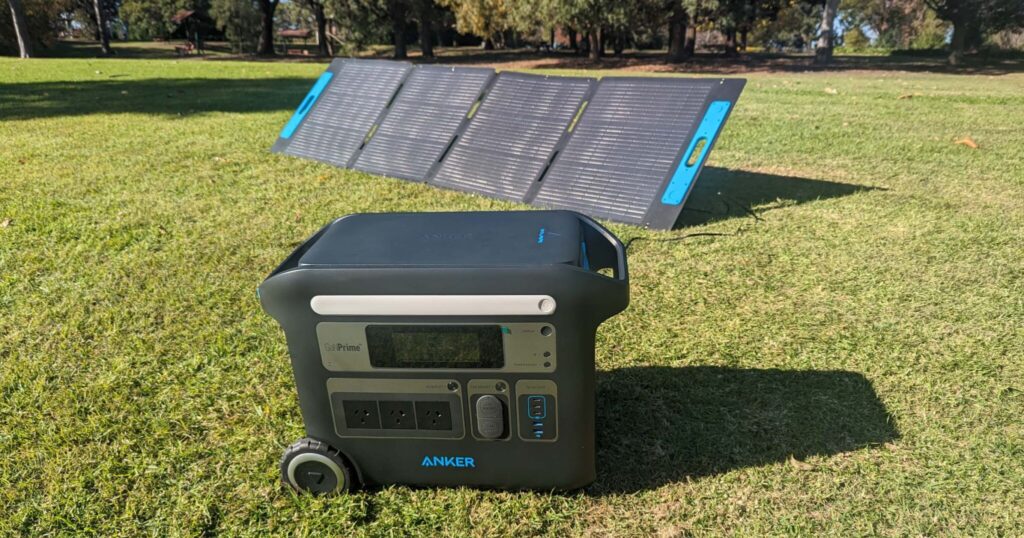
Final word
Ultimately, the Anker 767 PowerHouse really comes down to the cost. If you’re willing to invest thousands and have enough use cases where you can get the value out of it, this power station could feasibly perform for long enough to pay off that investment. For everyone else, the Anker 767 is likely overkill for the asking price.
How we choose the best power stations
We put power stations through their paces with real-world testing. That starts with comparing bullet-point features to practical use cases. Recharge times are important, as are the number of outlets and how quickly/reliably a power station can charge a product or keep it going if it's perpetually reliant on power. Ideally, a power station is easy to use and includes a companion app for monitoring and tweaking.
